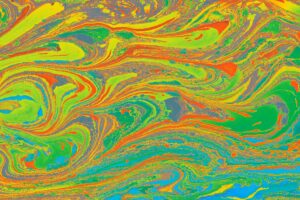In a realm where sound and consciousness intertwine, one finds themselves exploring the profound impact of psychedelic music. The eclectic union of mind-altering substances and musical expression provides an insight into the potential of human perception and creativity.
The altered perception bestowed upon those who experiment with psychedelic substances has long been a source of inspiration for artists across various music genres. Many conceptualize the effects of psychedelics as a translational experience, allowing one to tap into novel areas of the consciousness previously inaccessible.
The term psychedelic, derived from the Greek words for “mind-manifesting”, precisely encircles the essence of this experience. It describes the mind’s capacity to reveal its hidden, imaginative potential under the influence of psychedelics. This mental state introduces an intimate relationship with the surrounding universe, hence influencing creative outputs, particularly in the realm of musical creativity.
The birth of psychedelic music in the 1960s acted as a cultural catalyst igniting a global movement that significantly shaped several aspects of society. Artists began to venture beyond conventional music structures, integrating various forms of sound synthesis and experimentation into their work, keen on reflecting their altered consciousness. Overcoming sonic boundaries, intricate layers of sound, including uncanny instrumentals, unexpected shifts in rhythm and melody, and multi-dimensional harmonies became emblematic of the psychedelic sound.
Perhaps the most significant contribution of the psychedelic experience to music is the phenomenon of auditory hallucinations. These auditory distortions can transport the listener to previously unexplored soundscapes, wherein music can sometimes be seen or physical spaces can be heard. Scientists describe this as synesthesia, a blending of different senses. A study published in the Frontiers in Human Neuroscience presents evidence supporting the connection between psychedelics and synesthetic experiences.
Despite the expansive potential of psychedelics, there is a clear need for controlled use. In the realm of music, these substances act as tools for unorthodox exploration rather than recreational drugs, guiding artists and listeners towards uncharted territories of inspiration and perception.
The influence of psychedelics has permeated several other music genres over time. With the advent of rave culture in the 1990s, Electronic Dance Music (EDM) adopted many elements of psychedelic music, combining it with digital technology to further push creative boundaries. Emerging genres like psychedelic trance, psybient, and psybreaks encapsulate the essence of trance-inducing beats and expansive sound patterns, inviting listeners to a transcendental experience.
Moreover, the influence of psychedelic experiences bleeds into the visual presentation of music as well. Psychedelic art that matches the sound of the music is often used for album covers, enhancing the sensory experience of the listener, as seen in Pink Floyd’s iconic ‘Dark Side of the Moon’ album cover.
It is essential to acknowledge the imminent cultural and artistic value wrapped around the concept of psychedelics and music. Not only does it encourage the exploration and expansion of creative horizons, but it also challenges our conventional understanding of music, showing it to be an infinitely mutable art form.
As we continue to navigate through the universe of sound and consciousness, the relationship between psychedelics and music offers novel dimensions of musical expression still to be discovered, valuing the kaleidoscopic imagination that fills our silent world with sound.
While the research around psychedelics’ role in human creativity, cognition, and perceptual changes continues to be largely theoretical, one cannot deny the immense artistic and transformative potential that these substances hold. It is this profound relationship between synthetic and natural, conscious and unconscious, objective and subjective that makes the journey worth exploring.
This perspective does not advocate for uncontrolled substance use but instead aims to push for a better understanding of the potential benefits and outcomes. Ultimately, the exploration of sound and consciousness through psychedelics submits a promising discussion for the integrity and evolution of human creativity.




